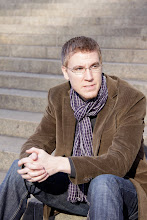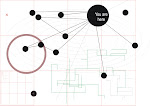In preparation for PKAP I spent some time considering what my role would be as an Artist-in-Residence (AIR). What does an artist/landscape photographer/theologian look for within an archaeological dig? How might these images serve both my intents as an artist and the needs and desires of the project?
Pertinent to these questions are also queries about the nature of photography itself. What is it? What does it do? …more than I can even begin to hint at today.
Gillian Rose, in Visual Methodologies: An Introduction to the Interpretation of Visual Materials suggests that researchers utilizes images in their research in a variety of methods. She confines her analysis to two main methodologies that are distinguished by the qualities attached to the image. Images are either supporting or supplemental in her typology.
The first category uses a photo-elicitation process in which the images are data to be analyzed, offering visual evidence of research questions and arguments. This process relies heavily upon a documentary approach to photography. Here the research framework or context gives the images their coding or meaning.
The second, or the supplemental, method allows the visual qualities of the photos themselves to emerge on their own terms, which serves as a visual supplement to the written text of the research. Supplemental photos are not seen as evidence for the argument, rather they are attempts to convince that the arguments are correct. Within this vein, the inherently descriptive nature of photography plays a prominent role in imaging the “texture” of a place. The wealth of visual information is left to the reader/viewer to interpret the elusive qualities that so often define place and time. It would seem that photographs in this trajectory have a markedly experiential or sensual significance that may be suppressed or ignored in the photo-elicitation process.
Bill Caraher’s comments back in January would seem to corroborate Rose’s typology and suggest my charge with PKAP this year is a mediating position between the supporting and supplementing methodologies by providing an alternative perspective for analysis, as well as depicting the emerging deeper textures of the sites and context.
As an artist and theologian, I am interested in the cultivation of place by uncovering and piecing together a historical narrative, while simultaneously adding to it by our presence within the Cypriot landscape.
skip to main |
skip to sidebar


An axis of access is a sacred place which our life revolves around. We hold them dear in our memory. They thrive in our imagination. They root us to this world. (To read more about the nature of this blog read the originating post from 08.07.07)
About Me

- rstander
- Grand Forks, ND, United States
- i am recent MFA grad from University of North Dakota. while i have range of interests, my ongoing research continues to explore the nature of place/space through artistic and liturgical lenses.
Blog Archive
-
▼
2009
(138)
-
▼
May
(20)
- PKAP Artist in Residence
- Threshold Series
- Threshold Series
- PKAP and Notre Dame Preparations
- Threshold Series (continued)
- North Dakota Signage IV
- North Dakota Signage III
- North Dakota Signage II
- North Dakota Signage
- Racetrack Pano's
- PKAP Blog Aggregator
- Commodified Memory Composites
- Commodified Memory Composites
- Commodified Memory Composites
- Got An Extra $120,000?
- Cyprus and PKAP Blogs
- Experimental Cartography V
- Experimental Cartography IV
- Experimental Cartography III
- Experimental Cartography II
-
▼
May
(20)
Labels
- abandonment
- aesthetics
- architecture
- Art
- artists
- books
- canada
- cartography
- commodified memory
- consumerism
- contested space
- CTS-AAR Photos
- Devotions
- Elevator Series
- Film
- graffiti
- individualism
- iowa
- kitsch
- lectionary readings
- liturgy
- Luke
- Mark
- minnesota
- misc.
- misc. education
- Montana
- music
- nationalism
- new topographics
- North Dakota
- northwestern college
- photographers
- photography
- pilgrimage
- PKAP
- priests in film
- printmaking
- Psalms
- questioning God
- religion as a chain of memory series
- retro signage
- sacred space
- saskatchewan
- scripture
- shoes
- sioux falls seminary
- south dakota
- stray shopping carts
- TH 541
- theological musings
- threshold series
- University of North Dakota
- Video
- visiting artists
- weather reports
Explore
- University of North Dakota
- Sioux Falls Seminary
- Northwestern College
- The Chronicle of Higher Education
- Inside Higher Ed
- College Theology Society
- Image Journal
- Christians in the Visual Arts (CIVA)
- College Art Association
- National Association of Baptist Professors of Religion (NABPR)
- American Academy of Religion
- The Ekklesia Project
- Speaking of Faith
- NT Wright Page
- Textweek.com
- Good Shepherd Episcopal
- Internet Movie Data Base (IMDB)
- The Simpson's
Exhibition Opportunities
Theology & The Arts
Theology and the Arts Academic Programs
My Blog List






